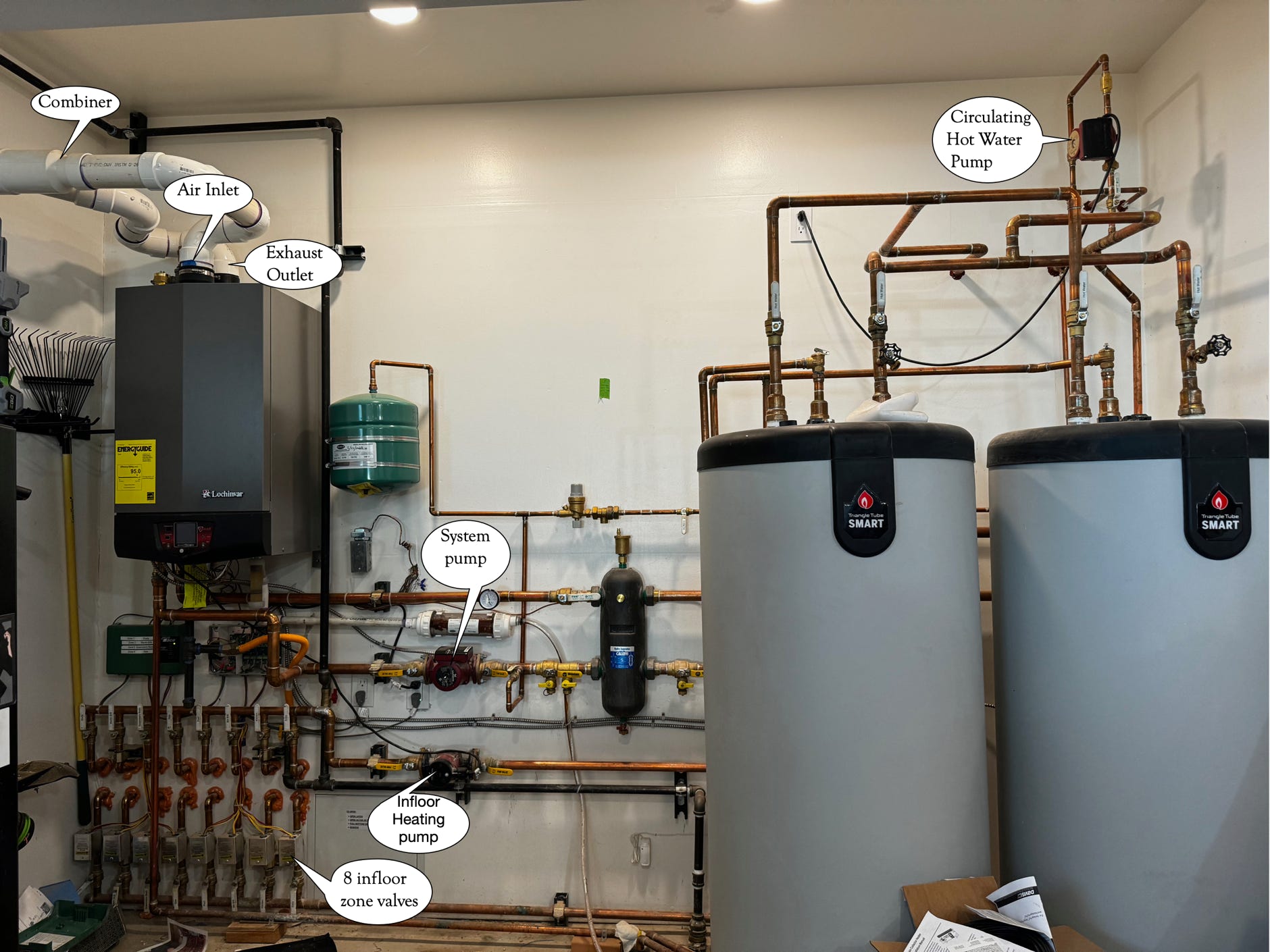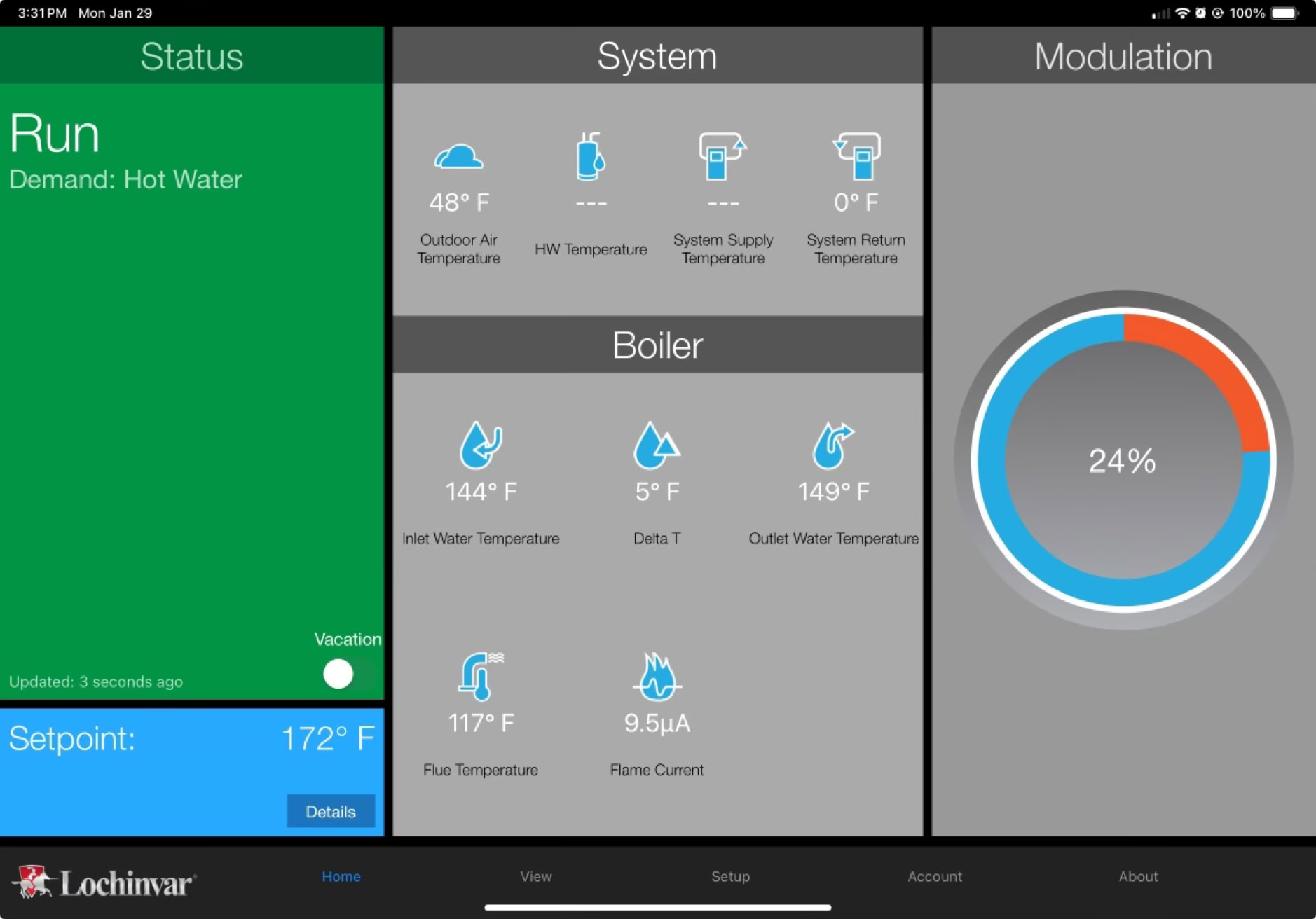May 22, 2023
New Lochinvar Knight WHB199 boiler was installed today.
The heating water loop lost pressure again and when Korey of KH Plumbing came out to inspect, we found out why. The original Triangle Tube boiler had developed a leak at the top of the heat exchanger. It had been leaking for a while, but since it was at the top, all the water evaporated before any leaked onto the floor under the boiler. They manufactures warranty did cover a heat exchanger replacement, but Martin took one look at the top of it and told Korey that those copper fittings were so corroded that they’d never come off. Korey was really relieved when we told him to just order a whole new boiler rather than inviting problems!

There is the new Lochinvar Knight WHB199 boiler at the left. Its 199,000 BTUs, the old one was 135,000 BTUs. Turns out that on the inside the exhaust goes in the outside and the air inlet is around it. On the outside, as I noted on January 15, 2024, it’s the other way around, so this is one complex PVC heat exchanger! (What??!! January 2024?? Does Martin have a Tardis? No, Martin is finally documenting this on January 29, 2024)
We now know how these boilers work! There is a thermostat in the left tank that’s set at about 135°F, and there are 8 zone thermostats it looks at also, through the TACO controllers, the small green boxes directly below the boiler.

This is the ConXus app from Lochinvar showing a hot water demand that it needs to satisfy. (yes, there’s an app for that 😉) The domestic hot water (HW) has priority. If the tank thermostat signals that the water temp has fallen the boiler controller turns the infloor pump off and the system and hot water pumps on. It then modulates the gas valve so that the Delta T between inlet and outlet is controlled. If it then still has an infloor heat demand, it shuts the DHW pumps (there’s one for each tank, behind the tanks so they’re not visible) and keeps the system pump on, so that the circulating water will quickly cool down to the infloor heat setpoint of 120 °F.
So that’s how it can satisfy multiple setpoints, by using different pumps and loops for each one.